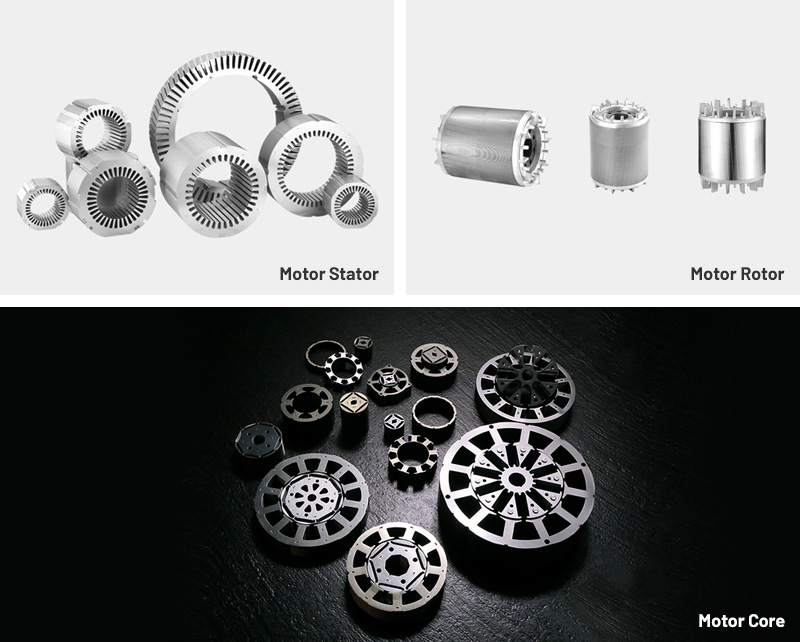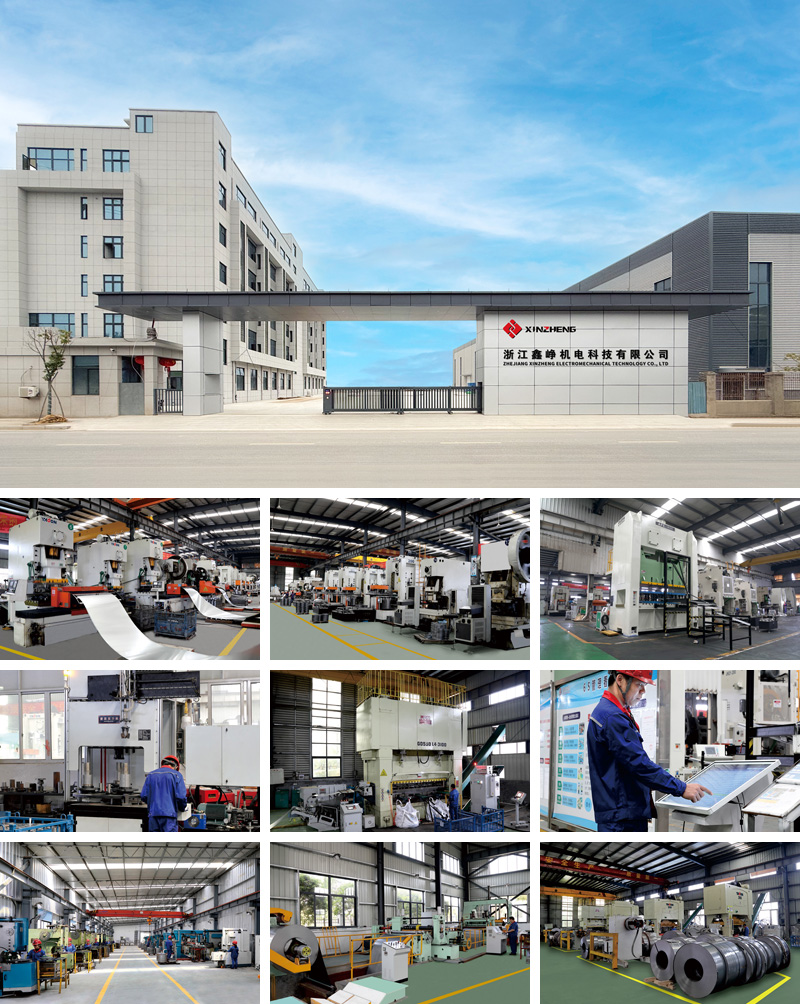Industrial motors are fundamental to modern manufacturing, energy production, and heavy machinery operations. In applications such as metallurgy, chemical processing, power generation, and high-capacity HVAC systems, motors are frequently exposed to elevated operating temperatures that can compromise efficiency, increase energy losses, and accelerate component degradation. With global energy-efficiency regulations becoming increasingly stringent, motor manufacturers are seeking materials and designs that sustain high performance under thermal stress while reducing operating costs and downtime.
Within three-phase asynchronous motors, the rotor plays a critical role in torque generation and magnetic flux conduction. High-temperature conditions can exacerbate eddy current and hysteresis losses, reduce mechanical stability, and shorten operational life. The YE4 series high-temperature heat-resistant motor rotor laminations address these challenges, enabling motors to maintain reliability, efficiency, and structural integrity in demanding thermal environments.
The performance of motor rotors is heavily influenced by two primary types of energy loss:
Eddy Current Losses: Alternating magnetic fields induce circulating currents within the rotor core, generating heat and reducing efficiency.
Hysteresis Losses: Repeated magnetization and demagnetization of rotor steel dissipates energy as heat, especially at elevated temperatures.
rotor laminations mitigate these losses by dividing the rotor into thin, insulated sheets. Each lamination restricts the path of eddy currents while maintaining optimal magnetic permeability. The YE4 series utilizes high-temperature-resistant materials and insulation to ensure minimal energy loss, stable torque output, and reduced thermal buildup, even in continuous-duty, high-load industrial environments.
YE4 rotor laminations are manufactured from premium silicon electrical steel with enhanced thermal stability and magnetic properties. Silicon content, typically between 2% and 3%, increases resistivity, reduces hysteresis loss, and maintains permeability at elevated temperatures. Laminations are coated with advanced high-temperature insulation to prevent interlaminar short circuits, ensuring consistent performance and prolonged lifespan.
Precision-cut laminations feature rotor bar slots and a central bore for the shaft. Thickness is carefully optimized—usually between 0.35 mm and 0.50 mm—to balance low eddy current losses with mechanical integrity. Proper slot and bore geometry ensure uniform magnetic flux, minimal vibration, and consistent torque production.
Material Preparation: Silicon steel coils are inspected for magnetic consistency and surface quality.
Precision Cutting: Laminations are stamped or laser-cut to exact dimensions to reduce burrs and maintain uniformity.
Insulation Application: High-temperature-resistant coatings are applied to prevent interlaminar conduction.
Stacking and Assembly: Laminations are stacked concentrically, forming a mechanically stable rotor core.
Rotor Bar Installation: Conductive rotor bars are inserted, secured with end rings, and integrated with the stator assembly.
This manufacturing process ensures that YE4 rotor laminations deliver high efficiency, thermal resilience, and mechanical stability under extreme operating conditions.
The reliability and efficiency of YE4 rotor laminations depend on several critical factors:
Material Quality: Uniform silicon steel with verified magnetic properties reduces core losses and enhances thermal tolerance.
Lamination Thickness and Insulation: Optimized thickness minimizes eddy currents, while durable insulation maintains electrical isolation and thermal stability.
Dimensional Accuracy: Precise slot and bore dimensions reduce vibration, torque ripple, and uneven flux distribution.
Stacking Precision: Proper alignment and minimal air gaps improve structural integrity and magnetic performance.
Thermal Management: Efficient heat dissipation protects insulation and prevents rotor deformation.
Process Consistency: Controlled manufacturing and rigorous quality checks ensure uniform performance across batches.
Attention to these factors ensures that YE4 series rotor laminations maintain high efficiency, mechanical stability, and long service life in high-temperature industrial applications.
Selecting reliable suppliers is essential for maintaining consistent lamination quality:
Material Certification: Suppliers should provide detailed documentation for steel grade, lamination thickness, and thermal performance.
Manufacturing Capability: Precision stamping, insulation application, and assembly processes must meet stringent tolerances.
Quality Assurance: Suppliers should implement batch-level testing, dimensional inspection, and magnetic property verification.
Regulatory Compliance: Compliance with IE3/IE4 energy-efficiency standards and environmental regulations ensures global applicability.
Supply Reliability: Consistent delivery prevents production delays and supports continuous industrial operations.
A trusted supplier ensures rotor laminations consistently meet design and performance specifications, enabling motor manufacturers to deliver energy-efficient, high-performance products.
Despite advanced materials and processes, challenges remain in high-temperature rotor applications:
Excessive Core Losses: Poor material selection, improper lamination thickness, or inadequate insulation can increase energy dissipation.
Thermal Degradation: High temperatures accelerate insulation breakdown, reducing rotor lifespan.
Vibration and Noise: Misalignment or inconsistent stacking may cause vibration, uneven torque, and acoustic noise.
Batch Variability: Inconsistent lamination quality can result in motors with fluctuating performance.
Cost Considerations: Premium materials and precision processes increase production costs, requiring careful cost-benefit analysis.
Addressing these issues requires rigorous quality control, precise engineering, and supplier oversight.
YE4 series high-temperature rotor laminations are suitable for industrial environments where thermal resilience and reliability are critical:
Pumps and Compressors: Continuous operation in chemical plants, water treatment, and power generation facilities.
Fans and Ventilation Systems: Motors exposed to high thermal loads in furnaces, industrial ventilation, and large-scale HVAC systems.
Heavy Machinery: Motors in metallurgy, casting, forging, and other high-temperature industrial processes.
Energy-Intensive Systems: Motors in renewable energy applications or hybrid energy systems benefit from reduced core losses and high thermal stability.
Motor Retrofitting: Upgrading older rotors with YE4 laminations improves efficiency, reduces heat generation, and extends motor lifespan.
In these applications, high-quality rotor laminations directly impact torque consistency, operational reliability, and energy efficiency.
Manufacturers are adopting high-grade silicon steel with refined grain orientation, enhanced resistivity, and improved thermal stability to meet increasing efficiency standards while reducing core losses at elevated temperatures.
High-temperature-resistant coatings and polymer composites improve insulation durability, extend operational life, and allow stable performance under extreme thermal conditions.
Variable-frequency drives (VFDs) are increasingly used to control motor speed. YE4 laminations are designed to maintain magnetic performance and thermal stability under fluctuating frequency and voltage conditions.
Computer-controlled stamping, automated stacking, and non-destructive testing reduce variability, improve dimensional precision, and ensure consistent lamination quality in high-volume production.
Industrial buyers demand traceable materials, batch-level certifications, and compliance with energy-efficiency regulations. Suppliers offering transparency and reliable documentation are more competitive in global markets.
Q: Why are high-temperature rotor laminations essential?
A: They reduce eddy current and hysteresis losses, maintain magnetic efficiency, and withstand elevated operating temperatures, ensuring long-term motor reliability.
Q: How does lamination thickness affect performance under high temperatures?
A: Optimized thickness minimizes eddy currents while preserving mechanical integrity, allowing consistent torque output and reduced heat generation.
Q: What role does insulation play in YE4 rotor laminations?
A: High-temperature-resistant insulation prevents interlaminar short circuits, reduces heat buildup, and ensures stable magnetic performance.
Q: How critical is supplier selection?
A: Supplier quality directly impacts material consistency, magnetic properties, and thermal performance, affecting overall motor reliability and lifespan.
YE4 series high-temperature heat-resistant motor rotor laminations are engineered for industrial motors operating under elevated thermal conditions. Precision-engineered from premium silicon steel with high-temperature insulation, these laminations reduce core losses, maintain torque stability, and enhance mechanical integrity. Motor manufacturers and OEMs benefit from rigorous material selection, precise manufacturing, and reliable supplier management to meet energy-efficiency standards, ensure operational reliability, and support long-term industrial performance. As global demand for high-temperature, energy-efficient motors grows, YE4 rotor laminations remain a critical component for robust, high-performance three-phase asynchronous motor systems.
Product Category

Comprehensive Strength


Copyright © Zhejiang Xinzheng Electromechanical Technology Co., Ltd. All Rights Reserved.
This website uses cookies to ensure you get the best experience on our website.